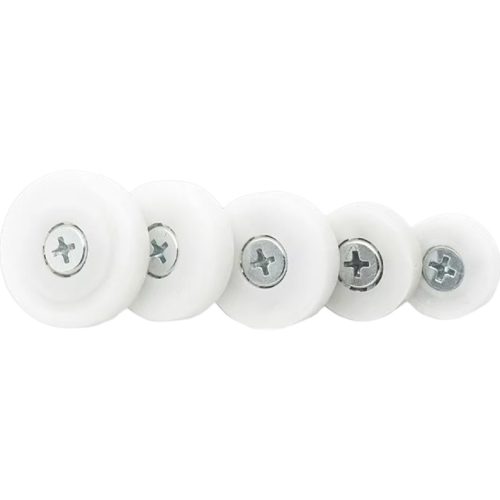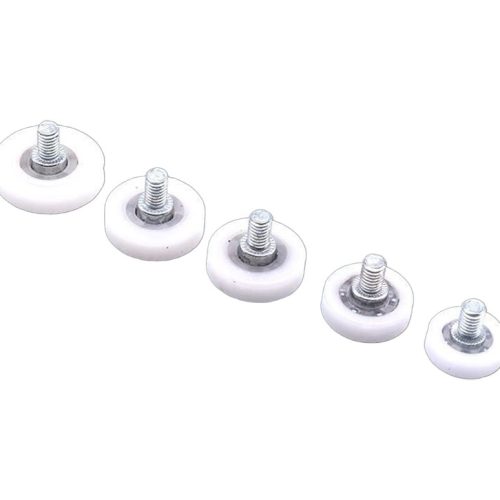Table of Contents
Categories
-
Adapter Sleeves (9)
-
Ball Bearings (1)
-
Ball Screw Bearings (2)
-
Ceramic Bearings (23)
-
Pillow Block Bearings (4)
-
Plain Bearings (30)
-
Roller Bearings (12)
-
Slewing Bearings (43)
-
Sliding Block (3)
-
Stainless Steel Bearings (27)
-
Super Precision Bearings (6)
-
Thin Section Bearings (9)
-
Track Rollers (4)
-
Universal Joints (1)
Bearing Wheels: 10 Best Practices for Longevity

Introduction
Bearing wheels are crucial components in various industrial applications, providing essential support and facilitating smooth motion. Ensuring their longevity is vital for maintaining operational efficiency and reducing downtime. This article delves into ten best practices that can significantly extend the lifespan of bearing wheels, offering insights for procurement professionals.
Understanding Bearing Wheels
Definition and Function
Bearing wheels are specialized components designed to support loads and reduce friction between moving parts. They are integral to machinery, allowing smooth and efficient operation. Their primary function is to support radial and axial loads, ensuring stability and motion control.
Installation Best Practices
Proper installation techniques are vital to the longevity of bearing wheels. Use the right tools and follow the manufacturer’s guidelines to avoid misalignment and excessive force. Correct installation practices ensure that the bearing wheels operate smoothly and efficiently.
Regular Maintenance Schedules
Daily Checks
Implementing daily checks helps in identifying potential issues early. Inspect the bearing wheels for signs of wear, lubrication levels, and any unusual noises. Regular daily checks contribute to the proactive maintenance of bearing wheels.
Monthly Inspections
In addition to daily checks, conducting more detailed monthly inspections is crucial. These inspections should include checking for alignment, wear patterns, and overall performance. Monthly inspections help in maintaining the optimal condition of bearing wheels and preventing major issues.
Lubrication Best Practices
Types of Lubricants
Using the right type of lubricant is essential for the performance of bearing wheels. Common lubricants include grease and oil, each suitable for different applications. The choice of lubricant should be based on factors such as operating temperature, load, and speed.
Lubrication Frequency
Regular lubrication is necessary to reduce friction and wear. Establish a lubrication schedule based on the manufacturer’s recommendations and operating conditions. Consistent lubrication practices enhance the lifespan of bearing wheels and ensure smooth operation.
Handling and Storage Guidelines
Proper Handling Techniques Bearing Wheels
Handling bearing wheels with care is crucial to prevent damage and contamination. Use clean gloves and appropriate tools to avoid introducing dirt and moisture. Proper handling techniques help in maintaining the integrity and performance of bearings wheels.

Optimal Storage Conditions
Storing bearing wheels in optimal conditions is essential to prevent corrosion and degradation. Keep them in a clean, dry environment away from direct sunlight and extreme temperatures. Proper storage conditions preserve the quality and readiness of bearing wheels for use.
Monitoring Bearing Wheel Performance
Performance Metrics
Monitoring the performance of bearing wheels involves tracking key metrics such as rotational speed, temperature, and vibration levels. These metrics provide insights into the condition and performance of the bearing wheels. Regular monitoring helps in identifying potential issues before they escalate.
Identifying Signs of Wear
Identifying signs of wear early can prevent major failures. Look for indications such as unusual noise, increased vibration, and visible wear marks. Early detection and addressing of wear signs are crucial for maintaining the longevity of bearing wheels.
Addressing Common Issues
Noise and Vibration
Noise and vibration are common indicators of bearing wheel issues. These problems can arise from misalignment, improper lubrication, or contamination. Addressing noise and vibration promptly can prevent further damage and ensure smooth operation.
Misalignment and Overloading
Misalignment and overloading are significant factors that contribute to bearing wheel failure. Ensure that the bearing wheels are properly aligned and that the load does not exceed their capacity. Correcting these issues enhances the lifespan and performance of the bearing wheels.
Upgrading and Replacing Bearing Wheels
Signs It's Time for an Upgrade
Knowing when to upgrade or replace bearing wheels is essential for maintaining operational efficiency. Signs that it’s time for an upgrade include frequent failures, increased maintenance costs, and reduced performance. Upgrading to higher-quality or more suitable bearing wheels can improve overall system efficiency.

Choosing the Right Replacement
Selecting the right replacement bearing wheels involves considering factors such as material, load capacity, and application requirements. Consult with manufacturers and experts to ensure that the replacement bearing wheels meet the necessary specifications. Choosing the right replacement ensures continued performance and longevity.
Conclusion
Ensuring the longevity of bearing wheels is crucial for maintaining the efficiency and reliability of various industrial applications. By following these ten best practices, procurement professionals can significantly extend the lifespan of bearing wheels, reducing maintenance costs and downtime. Implementing proper selection, installation, lubrication, and monitoring practices will enhance the performance and durability of bearing wheels, contributing to overall operational success.


















